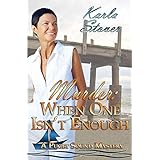People often ask, how do you write a mystery novel? The problem is that when I’ve finished a book, I’ve usually
forgotten how it all began. Right now I’m at the stage of forming my concept
for my next mystery, which makes it a good time to reflect on how this beginning
process works in my case.
I wouldn’t go that far and I doubt publishers
today would be as welcoming of unfinished books, but as I set out now to write
this next mystery I don’t know who my killer will be. Among the cast of
suspects I have in mind, there’s one I would like to be the killer, although
I’m missing a motive and am also keeping my options open for one of the others to have done
the deed.
This novel will be the third of my mystery
series set in Calgary and featuring insurance adjuster sleuth Paula Savard.
This means I have some character, setting and other details in place before
starting and I know that Paula needs to stumble upon this mystery through her
insurance adjusting job. In book two, she investigated a building fire. For her
next outing, I decided on a hit and run collision, mainly because my ten-year
insurance career specialized in automobile claims. I’m also making things
easier for myself by having the collision occur in my own neighbourhood, unlike
the murders in my previous books, which took place in parts of Calgary I had to
go out and
research. One character might even live in my
house.
Books
one and two were set, respectively, in fall and summer. I had decided the next
two in the series would be winter and spring, although the order didn’t matter. But hit and
run struck me as suited to winter’s icy roads and dark evenings. I also wanted this
next book to be the darkest of the series. So winter became the season for
novel number three. Since the first books, Deadly
Fall and Ten Days in Summer, contain
the season name in the title, I’d like the word ‘winter’ in the title of book
three, which is limiting. I came up with a title Dead of Winter, which I thought was great until my Amazon search
turned up seventeen books with this rather obvious mystery title. For now, I’ll
go with a working title.
Meanwhile, things are happening in Paula’s personal
life. Her mother is getting married, her brother visits from Montreal, her
daughter launches a restaurant business, her office has hired new staff and
Paula’s boyfriend stuns her with news that threatens to destroy their
relationship.
The novel’s second quarter will deal with the
fallout from these developments and, hopefully, lead to surprises and twists
that will keep things hopping through the last half of the story and propel it to a
thrilling climax and conclusion. That’s the goal.
Now I’m ready to go. All that’s left is the
hard part—writing.


























.jpg)

